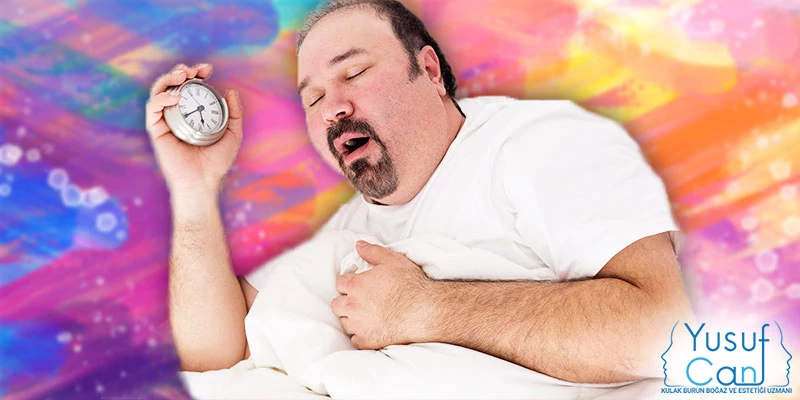
The region where the back of the tongue, the soft palate and the part where the small tongue is located join the nose may show a narrowing due to various factors or spontaneously. The elements in this region can overlap each other as a result of narrowing, and they can cause snoring by vibrating with breathing.
Snoring is a sound that occurs when the tissues in the contracted area vibrate as a result of the loss of stiffness, relaxation and sagging of the structures that make up the region that provides air passage during breathing.
Snoring indicates that the air passage area in which breathing is performed does not have sufficient patency. As the narrowing of the air passage area occurs, an increase in the severity of snoring is also observed. Especially in the supine position, with the muscles relaxing well in the area where air passage occurs, the soft palate, small tongue and tongue November shift to the back, so snoring becomes more pronounced.
Snoring causes breathing disorders in sleep and has negative effects on sleep quality.
Snoring is observed in an average of 10% to 30% of adult people. However, the majority of this average figure is made up of simple cases of snoring that do not cause serious health problems in a person. On average, 5 out of 100 people have respiratory arrest for more than 10 seconds during sleep, that is, sleep apnea, along with severe snoring.
Snoring is considered normal if people are tired, drink alcohol, or experience nasal congestion in situations that do not cause negative effects on a person's sleep quality and daily life. However, the fact that the observed snoring becomes continuous or intensifies, thus creating a negative impact on daily life and sleep quality, makes snoring cease to be a natural condition.
Snoring during sleep, respiratory disorders, respiratory arrest, headaches, accompanied by inability to rest indicate the possibility of sleep apnea.
Sleep apnea can be defined as stopping breathing for 10 seconds or more during sleep. Sleep apnea, called a condition in which breathing stops for a certain period of time during sleep and becomes superficial, can recur several times during the night's sleep. In fact, the problem of sleep apnea, which is caused by relaxation in the muscles that keep the upper respiratory tract open, impairs sleep quality and November brings with it many more health problems.
During sleep apnea, the respiratory effort continues, and this effort, which increases after a while, stimulates the brain and provides air passage. Until the state of cessation of breathing, the snoring person continues to breathe and snore again with a noisy grunt with the stimulation of the brain.
Sleep apnea negatively affects the quality of sleep, prevents the body from resting and regenerating, can cause daytime drowsiness and weakness, heart rhythm disturbances, high blood pressure, and even stroke or sudden death at night in later processes.
Sleep apnea can be observed in people of any gender and age group. Since November, the structures of the muscles in the upper respiratory tract of women are of a different structure than the November structures of men, sleep apnea in women is observed less than in men. Sleep apnea in children can occur due to the fact that the nasal flesh or tonsil structure is large.
In people with irregular breathing, sleep apnea can occur during falling asleep, waking up, or dreaming, depending on the situation.
Sleep apnea can be observed in people who are addicted to alcohol and cigarettes, tend to sleep in the wrong sleeping position, people with an overweight body structure, people with developmental retardation in the lower jaw, or people with a short neck height. In addition, the risk of sleep apnea increases in people who take allergy, antihistamine, November relaxant or sedative-type medications.